Introduction
IT infrastructure plays a crucial role in organizations, serving as the backbone for efficient business operations and enabling digital transformation. From hardware and software components to networking and data centers, each element is essential for supporting technology needs and driving innovation. This article delves into the intricacies of IT infrastructure, exploring its components, the importance of proactive management, and the future trends shaping the industry.
By understanding the critical role of IT infrastructure and optimizing its capabilities, organizations can enhance their agility, gain a competitive advantage, and pave the way for future success.
What is IT Infrastructure?
The essence of IT infrastructure lies in its components: hardware, software, and networking elements, all integrated to facilitate the flow and management of information within an organization. Such infrastructure is pivotal, as it underpins business processes and operations, enabling organizations to harness technology to achieve efficiency and strategic advantage. In the realm of higher education, Purdue University exemplifies the transformative power of advanced IT infrastructure. Despite its historic achievements and recognition for innovation, particularly in the semiconductor field, the university recognized the need for an IT overhaul to maintain its leading position and continue to deliver exceptional service levels across its network and system operations. This aligns with the insights gathered from an IDC survey indicating that achieving strategic business outcomes—such as digital transformation and enhanced customer experiences—necessitates a deep alignment of IT infrastructure with organizational goals. However, creating a technology adoption roadmap to navigate the evolution of IT infrastructure is not trivial, especially when integrating emerging technologies. It requires a structured approach to planning and foresight to align IT strategies with business objectives, ensuring readiness for future technology needs.
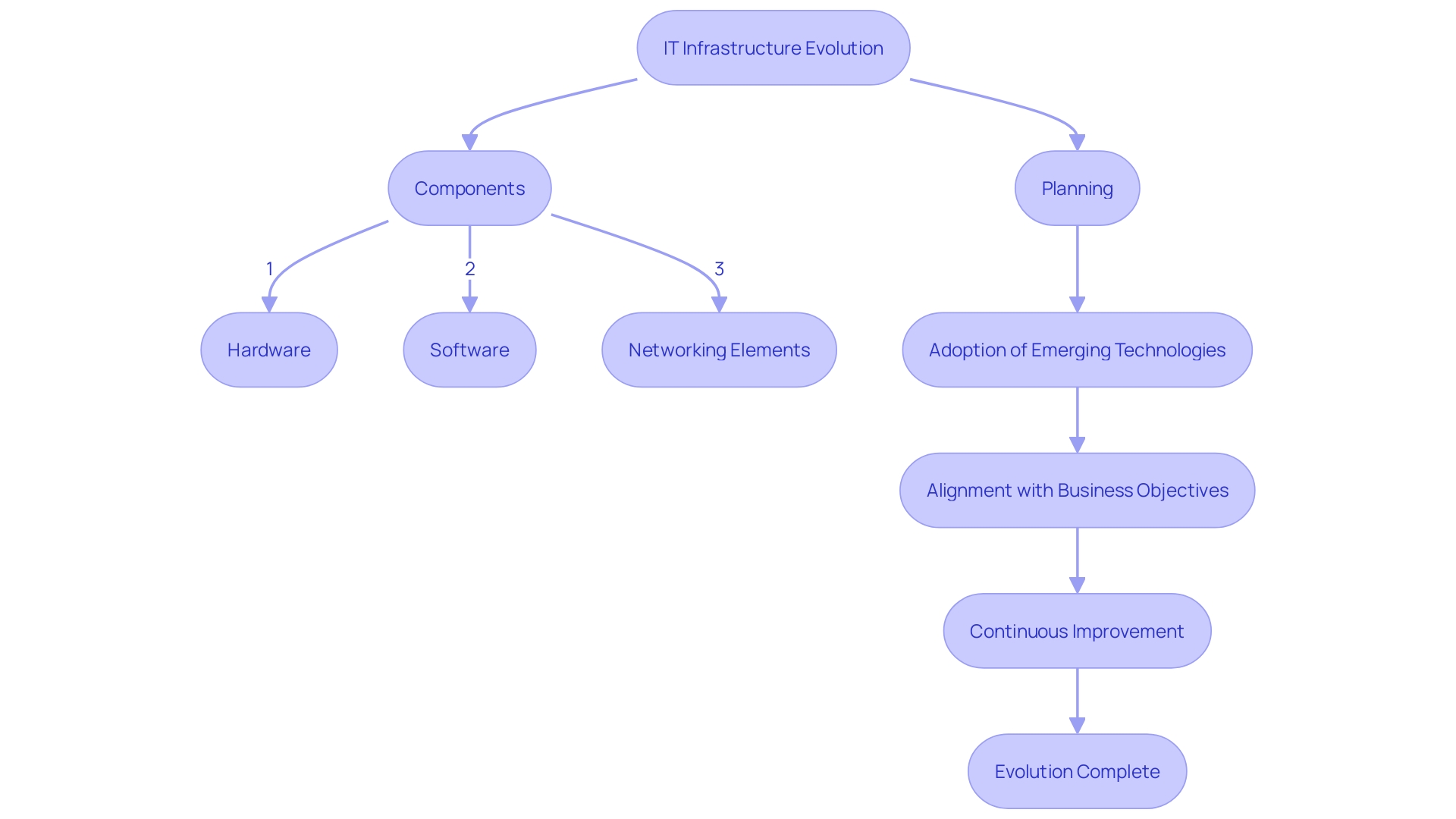
Components of IT Infrastructure
An IT infrastructure is the backbone of any modern organization, comprising critical components that are key to supporting technology needs and business operations. The hardware component includes servers, computers, data centers, switches, hubs, and routers. Software encompasses applications and operating systems that manage hardware and provide a platform for running business applications. Networking elements ensure connectivity and communication between hardware and software.
To understand the depth of IT infrastructure, consider the core systems that are pivotal to an organization's function. For example, in a government department, this might encompass systems for managing public records, processing financial transactions, or handling human resources. Understanding the technology stack, user groups, and subsystems of these core systems is essential in assessing the infrastructure's efficacy.
Subsystems or modules within these core systems each serve specific functions and must seamlessly integrate with each other. The relationships between these subsystems and external systems are just as crucial, requiring a clear documentation of interactions and dependencies.
As IT infrastructure evolves, so does the industry. For instance, data center considerations are shifting towards semiconductor technologies that power AI and machine learning, with companies like HPE expanding their networking market through acquisitions. Similarly, the development of desktop chips is influencing the reduced dependency on remote AI services.
Within the enterprise data center, compute resources, storage, and network infrastructure are integral. These elements must work in unison to support the vast array of business applications. Data center efficiency is measured by how effectively these components perform, which can be quantified by metrics such as floating-point operations per second (FLOP/s), indicating the compute performance of the infrastructure.
The material aspects of AI and its reliance on compute resources also highlight the importance of a robust IT infrastructure. As digital technologies continue to advance, companies must adapt their infrastructures to stay competitive and meet the growing demands for processing power, which is vital for operations like training AI models.
To stay informed on industry trends, resources such as Dell'Oro Group's Data Center Physical Infrastructure quarterly report are invaluable. They offer insights into market sizes, forecasts, and competitive landscapes, catering to different segments like cloud service providers, telcos, and enterprises.
In summary, a comprehensive understanding of IT infrastructure involves not only recognizing its components but also the complex interplay between them, the evolving industry trends, and the performance metrics that define their efficiency.
Hardware Components
At the heart of IT infrastructure lies the physical framework composed of critical hardware components. These are the tangible assets essential for the operation and management of enterprise IT environments. Notably, the architecture includes powerful servers that drive application processing, computers for user interface and operations, expansive storage devices that house data securely, and network devices that ensure seamless connectivity across the organization. Additionally, peripherals like input/output devices play a role in enhancing the functionality of IT systems.
Delving into the specifics, servers are the workhorses providing the computational might necessary for heavy workloads and enterprise-level applications. They form the backbone of data centers, where technology such as System on a Chip (SoC) is revolutionizing the industry by integrating all essential components into a single chip, optimizing for performance, power efficiency, and space conservation. SoCs are pivotal in powering a range of technologies from data centers to consumer electronics, markedly influencing the IT landscape with their compact size and robust capabilities.
Storage solutions, on the other hand, are evolving to meet the escalating data demands, with manufacturers and suppliers now offering robust inventories and diverse options for IT infrastructures. This ensures that businesses can select storage devices that align with their capacity requirements and data management strategies, enabling efficient and secure data storage.
Network devices, including routers, switches, and wireless access points, provide the vital links between various IT components, facilitating communication and data exchange within and beyond organizational boundaries. The recent trends in the industry underscore the importance of network scalability and the integration capabilities of these devices, as seen in HPE's strategic acquisition of Juniper to bolster its networking offerings.
Peripheral devices, while often overlooked, are essential for user interaction with the IT infrastructure. They encompass a wide range of devices, from monitors and keyboards to specialized equipment, each adding a layer of functionality and enhancing the overall system performance.
As the industry progresses, the emphasis on the scalability, efficiency, and integration of IT hardware components will continue to shape the technological advancements and operational strategies within organizations. This landscape is underscored by a continuous push towards automation, with a complementary balance between human oversight and the precision of modern technology.
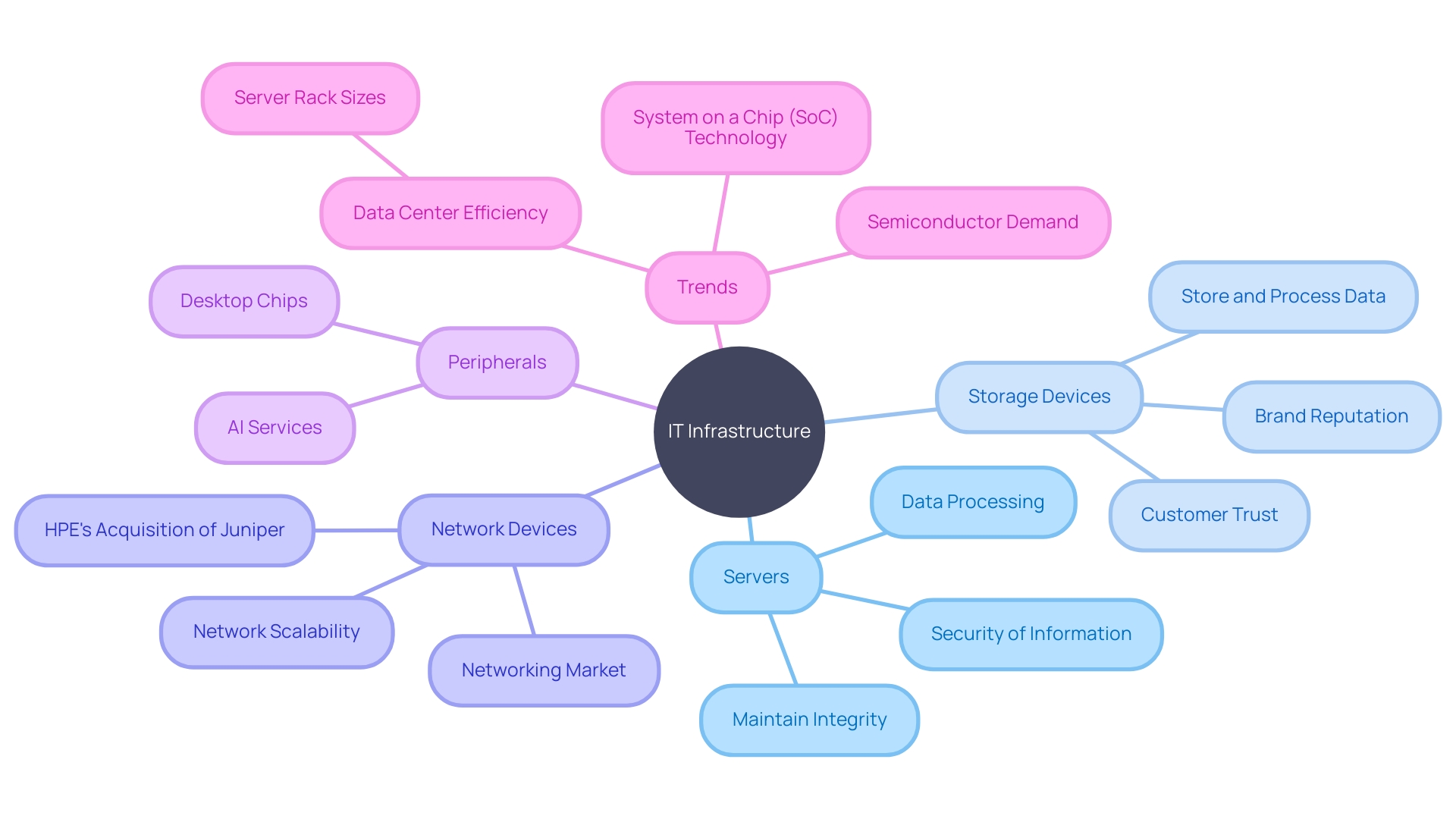
Software Components
Software components are the lifeblood of an organization's IT infrastructure, enabling employees to perform tasks, manage data, and automate processes efficiently. They include a wide array of programs and applications, such as databases, enterprise software, and operating systems, tailored to the specific needs of the organization. For example, a government department may rely on software for public records management, while a manufacturing firm might utilize enterprise resource planning systems to streamline operations.
Understanding the composition of these software elements is critical, akin to a Software Bill of Materials (SBOM), which serves as a comprehensive inventory of the software's ingredients. This is especially relevant in light of recent financial reporting changes proposed by the Financial Accounting Standards Board, aiming to provide transparency on cash spending related to software costs. With this proposal, companies would need to disclose cash flow related to software ranging from enterprise systems to mobile banking applications, emphasizing the economic significance of software investment.
The intricate structure of software components is often broken down into subsystems or modules, each with its own functionality and user groups ranging from administrators to end users. For instance, a core banking application might consist of modules for account management, transaction processing, and customer service. The relationships between these modules, how they integrate with external systems, and their collective ability to fulfill functional requirements are paramount to the system's effectiveness.
In the current technological landscape, the sheer volume and complexity of software can lead to security vulnerabilities, as highlighted by cybersecurity experts. The dependency on numerous external libraries and codebases necessitates a meticulous approach to software security and quality. To this end, organizations must prioritize developer productivity and software maintenance, as these factors are closely correlated with the overall performance and sustainability of IT systems.
Ultimately, the strategic management of software components is not just about maintaining the status quo but also about innovating and preparing for the future. As illustrated by the approach taken in automotive manufacturing, regular system updates, discovery phases, and planning are essential to delivering reliable and cutting-edge technological solutions. By emulating such diligence in software engineering, organizations can ensure that their IT infrastructure not only supports current operations but also drives progress and competitive advantage.
Networking Components
Networking components, the backbone of IT infrastructure, have evolved from merely enabling data communication to becoming pivotal in supporting complex business operations and driving organizational efficiency. These integral elements, comprising routers, switches, firewalls, wireless access points, and network cables, now must accommodate the dynamic needs of modern enterprises.
For instance, with the advent of IoT, networks are tasked with managing a surge in connected devices, as seen in manufacturing sectors where IoT facilitates predictive maintenance and enhances product quality control. The agility of a network to support such advancements is critical, as highlighted by the swift integration of IoT in factories, warehouses, and offices to address a spectrum of operational challenges.
Moreover, the shift towards as-a-service models has redefined the role of IT infrastructure. Instead of focusing solely on cost management, IT organizations can leverage these models to scale services based on performance outcomes, thereby contributing to profitability. This is evident in the manufacturing realm, where companies are now utilizing technology not only to drive cost efficiency but also to augment revenue streams.
Educational institutions, such as the Juan Misael Saracho Autonomous University in Bolivia, have experienced firsthand the need for adaptable networking solutions. Faced with the challenges of expanding educational access across provinces and adapting to remote learning during the pandemic, they realized the importance of a robust and flexible network infrastructure to support their vision of innovation and leadership in education.
The networking industry itself is witnessing significant transformations. Companies like Cisco are making strategic acquisitions to reinforce their market position and meet the changing demands of network users. Similarly, the IT community is increasingly adopting Software-Defined Wide-Area Network (SD-WAN) overlays to modernize their enterprise architecture, a move that aligns with the journey towards becoming digital, AI-driven businesses.
As we continue to navigate a landscape where network devices and software components are subject to obsolescence, the focus on modernizing IT infrastructure to support business agility and growth has never been more pronounced. With public cloud services spending projected to soar to $678.8 billion by 2024, the demand for network and data center professionals skilled in these evolving technologies is set to rise, offering a wealth of opportunities for advancement in the field.
Facilities and Data Centers
Data centers, often perceived as uniform, monolithic structures on the outskirts of urban areas, are in fact pivotal facilities for IT infrastructure. These centers are strategically positioned within 50 miles of metropolitan areas to minimize latency and maximize efficiency for the vast amounts of digital data they process. Their design is not arbitrary; it encompasses a complex network of computing and storage resources, including routers, switches, firewalls, storage systems, servers, and application-delivery controllers, all crucial for the delivery of shared applications and data.
The recent emergence of 'hyperscale' data centers, sprawling over 100,000 square feet, is a testament to the scale challenges and economic shifts in the industry. These facilities are the backbone of substantial technological enterprises, housing the immense scale of infrastructure necessary for companies like Meta, which deliberately embrace unique technical challenges and innovative solutions.
Amidst the expansion and efficiency-seeking in the sector, energy remains a focal point. With the global data generation expected to grow 1.5 times by 2024 compared to two years prior, the demand for data center capacity driven by cloud migration and AI advancements is surging. As a result, the industry is also witnessing a geographic diversification, with locations like New Albany, Ohio, becoming new hubs of data center activity. This shift is not solely about space and power but also about the strategic importance of regionalization in the industry's future.
This strategic importance was highlighted in a meeting addressing capacity management, where the integration of Infrastructure as a Service (IaaS) projects was emphasized as a significant piece of the puzzle. As data centers evolve, the scalability of their components, including cooling, power, and protection systems, continues to be a primary consideration, reflecting industry efforts to design and construct more efficient and sophisticated facilities.
The data center landscape is indeed changing, with investments in on-premises data center hardware and software surpassing $100 billion. This trend underscores the continuing relevance of data centers, even as cloud computing grows, particularly for industries where on-premises computing offers distinct advantages. The data center, once a simple storage facility, has become a complex and dynamic engine driving the modern digital economy.
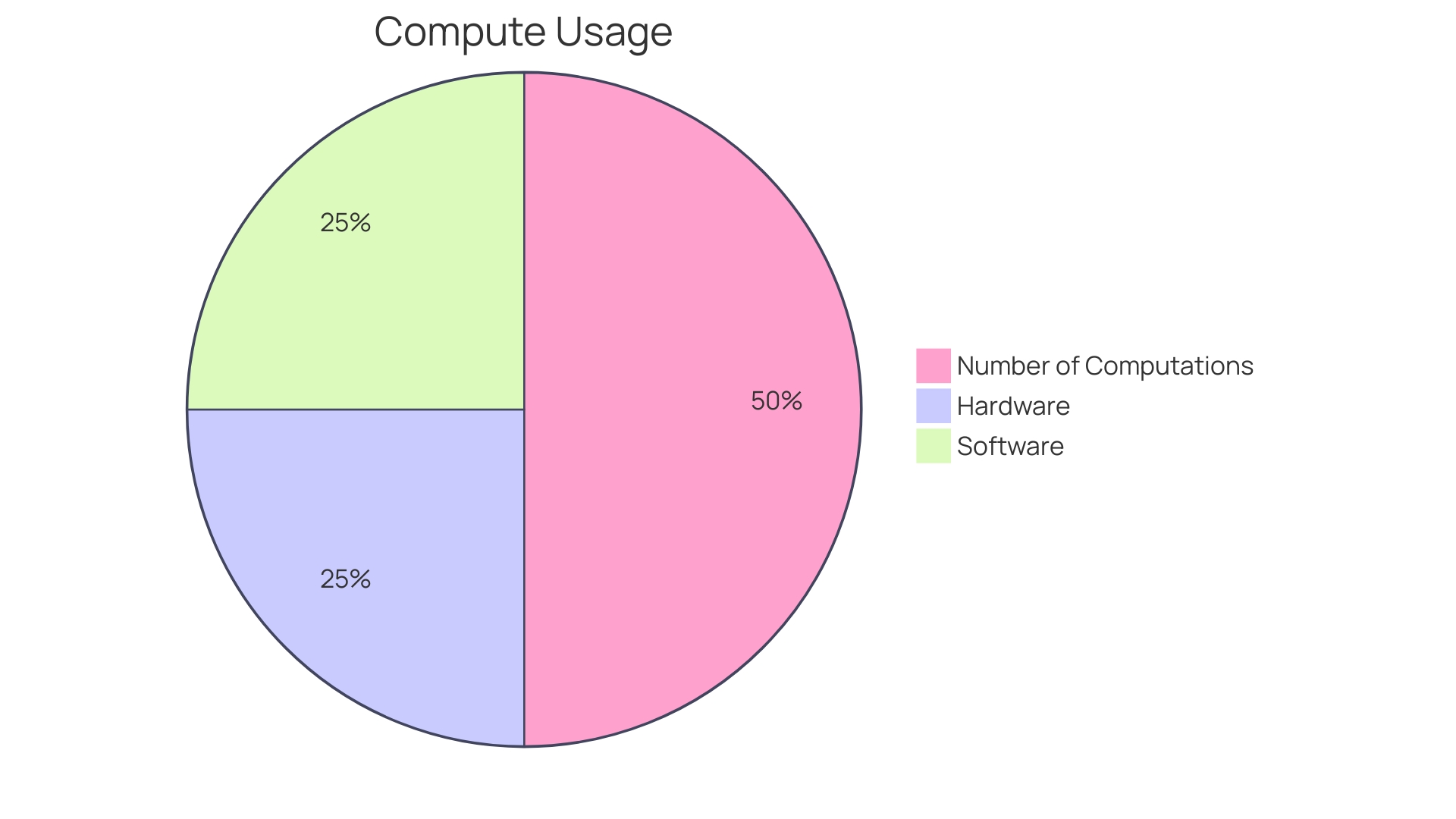
Importance of IT Infrastructure
The backbone of any organization's technological prowess lies in its IT infrastructure, which is pivotal for facilitating service delivery, bolstering business processes, and propelling digital transformation. Consider the case of the Oodnadatta Aboriginal School in Australia's remote region, where despite the challenging geography, the local government has prioritized providing fast, reliable internet to ensure educational resources are accessible. This commitment exemplifies the critical role of IT infrastructure in supporting far-reaching organizational objectives.
Moreover, the example of Purdue University highlights the transformative impact of an advanced IT infrastructure. Recognized among the world's most innovative institutions for its contributions to the semiconductor field, Purdue's pursuit of maintaining high service levels for network and system operations demonstrates the value of a robust IT setup.
In light of this, it's important to recognize that achieving strategic business outcomes such as digital transformation, enhanced customer experiences, and increased operational efficiency is contingent upon a solid IT infrastructure. These outcomes are cited by a recent IDC survey as top priorities for organizations. However, establishing relevant business goals and aligning IT investments with these objectives is an intricate process that demands strategic planning and execution.
Addressing challenges like network access and data management is crucial for any data strategy. High-speed internet is indispensable for smooth operations, yet many businesses grapple with inadequate connections. A competent IT team can be instrumental in establishing and sustaining a robust internet connection. Additionally, TCP/IP networks, which are foundational for managing emails, apps, and internet browsing, can significantly influence network speeds and data integrity when not properly managed.
Incorporating insights from industry news, such as the importance of scalable data center equipment and the impact of emerging technologies like AI on semiconductor demand, can provide valuable context for IT infrastructure planning. With the tech landscape rapidly evolving, it is vital for organizations to adapt their IT capabilities to meet both unique and common business needs, thereby fostering trust and satisfaction among customers.
Ultimately, the intricate fabric of IT infrastructure encompasses various components, including hardware and software, which collectively ensure the efficiency and effectiveness of an organization's IT processes. As businesses strive to navigate the digital landscape, the importance of a carefully curated, well-managed, and strategically aligned IT infrastructure cannot be overstated.
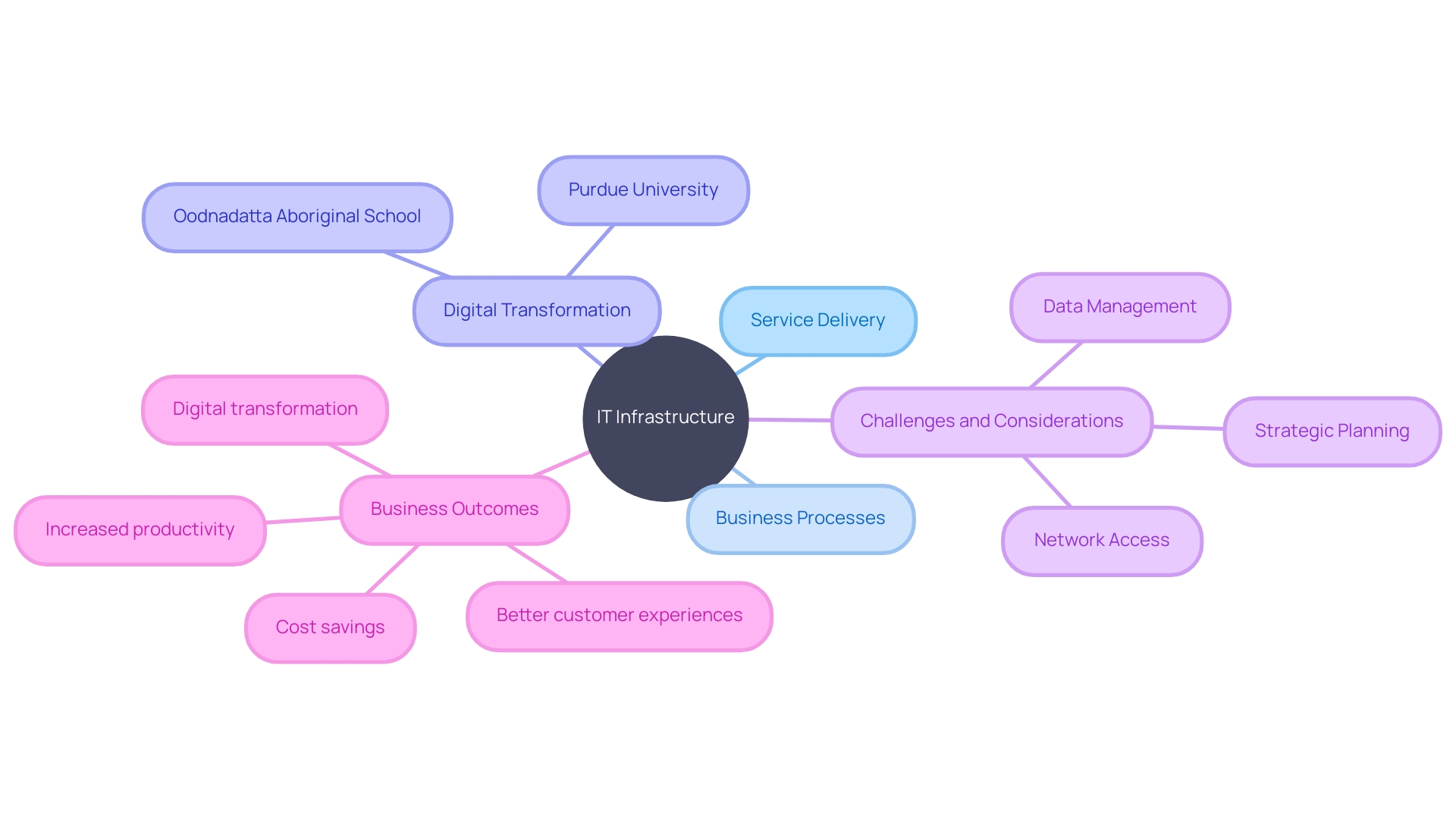
Business Agility and Competitive Advantage
A robust IT infrastructure is the backbone of modern enterprises, enabling them to swiftly adapt to market shifts and evolving business requirements. This agility is critical in a digital era where innovation is relentless and customer expectations are high. For instance, consider Rivian, an electric vehicle manufacturer with a goal of net zero emissions by 2040. Rivian's dispersed operations across the globe highlight the need for an IT infrastructure that supports sustainable practices and agile processes. Similarly, TBC Bank's pursuit of agility led to an organizational transformation, reducing complexity to support growth and improve their customer and employee experience.
These real-world examples underscore the significance of strategic alignment between IT investments and business outcomes. According to an IDC survey, the most sought-after business outcomes include digital transformation, enhanced customer experiences, improved productivity, and cost savings. However, achieving these outcomes is challenging, with a staggering 70% of digital transformation initiatives falling short, often due to organizational complexity.
The urgency for robust IT support is further emphasized by Allison Gilmore, Vice President of DCC, who points to the explosive demand for digital services as a catalyst for data center industry growth. With data centers pivotal in our digital economy, they're also at the forefront of sustainable power initiatives, demonstrating the industry's role in both meeting digital demands and advancing environmental goals.
Indeed, the strategic management of IT infrastructure is not just about keeping pace with technological advances but also about harnessing these developments to propel business growth and foster innovation, as evidenced by the experiences of companies like Rivian and TBC Bank.
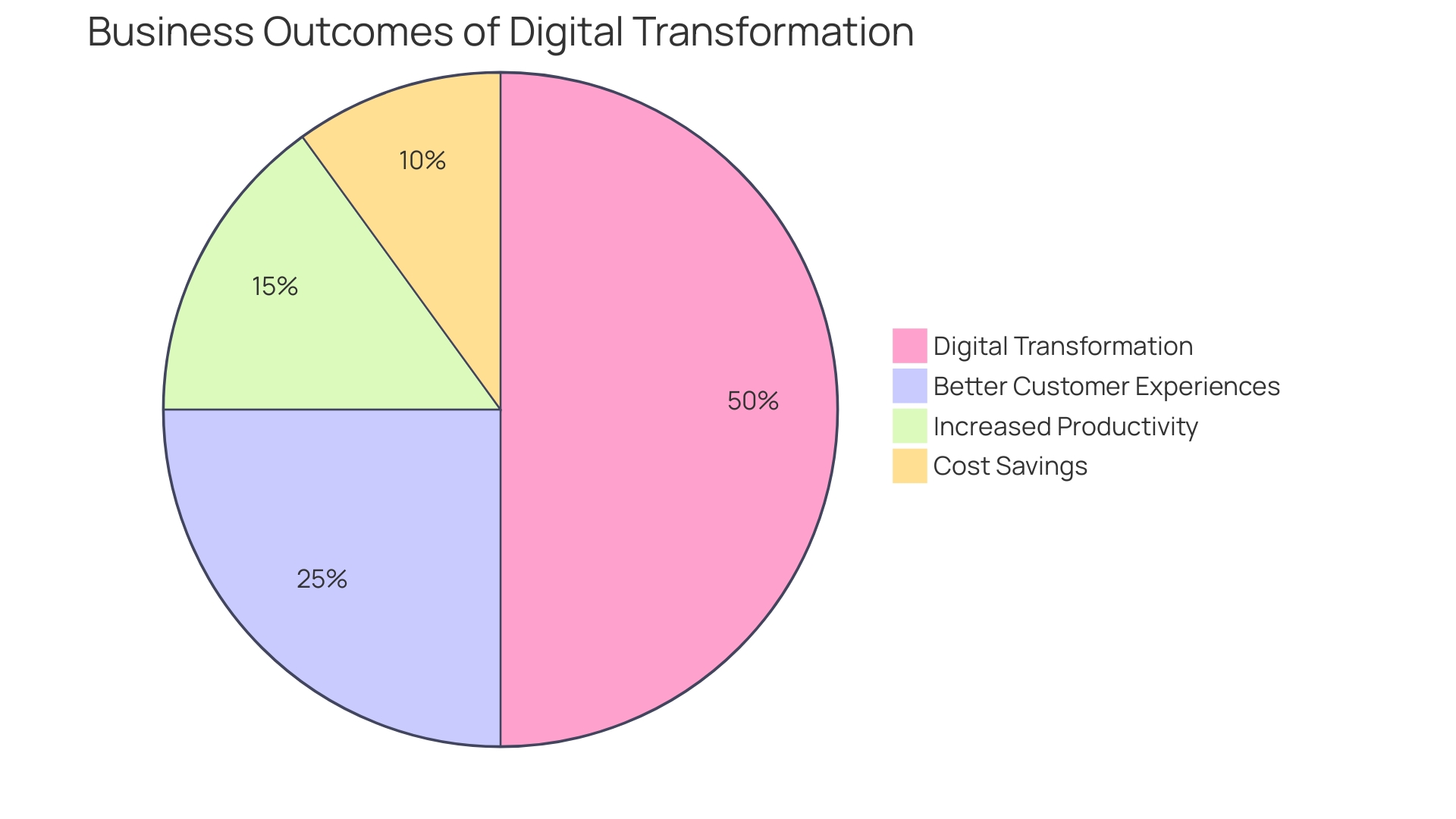
Innovation and Cloud Technologies
IT infrastructure has become the backbone of business innovation, particularly with the introduction of cloud computing. With cloud computing, organizations gain the flexibility of on-demand resource availability, enabling them to swiftly adjust to changing demands. This technology not only streamlines IT productivity but also catalyzes business innovation and paves the way for the integration of advanced technologies such as generative AI.
The IT and software development industry, more than any other, has harnessed the cloud to handle dynamic workloads, support continuous integration and deployment pipelines, and manage resources efficiently. For instance, healthcare, which previously relied on traditional on-site systems, has witnessed a transformation with cloud technology enhancing accessibility, scalability, and collaboration.
Key IT infrastructure components include hardware—comprising servers, networking equipment, and storage systems—and software, which ranges from operating systems to specialized industry applications. As articulated by experts, cloud technology services as a powerful enabler for organizations, allowing them to economize while tapping into sophisticated technological advancements without heavy upfront investment in IT solutions.
With the public cloud market offering flexible payment models, such as pay-as-you-go and subscriptions, businesses can now access scalable resources in a cost-effective manner. Service providers manage the digital infrastructure, while users pay only for the resources they use.
The geographical concentration of cloud infrastructures, predominantly managed by tech giants like Amazon, Microsoft, and Google, points to a market where hyperscale computing infrastructures are essential. These infrastructures are crucial for advanced AI research, which demands not just vast data sets but also immense computing power.
As businesses seek to maximize their cloud ROI, they must balance their investments with anticipated benefits, including those brought about by generative AI, to strategically plan and prioritize their migration to the cloud. This strategic approach to cloud adoption is essential to avoid common pitfalls and fully realize the transformative potential of cloud technology.
Managing and Maintaining IT Infrastructure
Proactive management of IT infrastructure is not a mere technical necessity; it is a strategic enabler of innovation and operational excellence. Consider Purdue University, which, despite being a beacon of innovation in semiconductors, realized that its IT backend required an overhaul to match the institution's forward-thinking reputation. By focusing on enhanced service levels for network and system operations, Purdue was able to achieve unprecedented reliability and resilience, illustrating the transformative impact of meticulous IT management.
In the realm of IT infrastructure, a Service Level Agreement (SLA) is a cornerstone, defining the expected performance standards such as uptime, response time, and resolution time. The avoidance of downtime is crucial, as any period when services are unavailable can impede an organization's functionality. For example, managed IT services have been instrumental in allowing businesses to save thousands of operational hours, redirecting focus to more strategic initiatives. North America's penchant for managed services is testament to their value, with the region leading in adoption due to the significant efficiency, scalability, and cost-effectiveness gains provided.
In line with this, companies are increasingly turning to third-party providers, like Rackspace Technology, to leverage their expertise. IFCO's collaboration with Rackspace exemplifies this trend, where even with a small in-house IT team, they sought to harness the provider's experience for a seamless transition to cloud services.
Moreover, IT governance plays a pivotal role in establishing a robust policy framework encompassing data protection, access controls, and regulatory compliance, thereby laying a foundation for a secure IT environment. As the managed services market burgeons, with providers like Insight offering a spectrum of services tuned to specific IT needs, organizations are empowered to drive strategic adoption of new solutions and optimize existing infrastructure, fostering a deep trust in technology that is essential for business success.
Technology Operations and Daily Management
Effective IT infrastructure management is pivotal for the productivity and stability of an organization. It encompasses a broad range of activities such as system monitoring, performance tuning, backup and recovery, and user support. These daily tasks, when executed promptly and efficiently, uphold service levels and provide a seamless technology experience for end-users. An illustrative example of the importance of IT management comes from a company's transition to using Terraform. By defining their infrastructure as code, they were able to move away from time-consuming manual provisioning, standardize configurations, and scale effortlessly. Purdue University's story is another testament, having achieved unprecedented service levels for their network and system operations by modernizing their IT infrastructure.
Moreover, IT management involves coordinating diverse resources and environments to enhance speed and stability throughout the enterprise. Configuration management, for instance, maintains systems and servers in a consistent state and can be automated for efficiency. Application lifecycle management oversees an application from inception to retirement, integrating various roles and processes.
Asset management is also a crucial element, with a focus on tracking and controlling valuable company assets. Gartner highlights the importance of understanding the lifecycle of technology assets for sound technology strategy and architecture decisions. Assets are categorized into consumable, like printer toner, and non-consumable, such as hardware, each requiring different management approaches.
To drive innovation and accommodate emerging technologies like AI, it is essential to adopt a product thinking mindset that emphasizes user needs and long-term value creation. As the World Economic Forum points out, energy efficiency in data centers is not only an economic imperative but an environmental one. With managed services, organizations have saved countless hours, allowing them to concentrate on strategic tasks, as evidenced by Insight's managed services success stories. Lastly, with the stark reality that a significant percentage of SMBs lack in-house cybersecurity skills, the uptick in partnerships with Managed Service Providers showcases the critical role these services play in safeguarding data and ensuring compliance.
Future Trends in IT Infrastructure
The landscape of IT infrastructure is undergoing a transformative phase, influenced by rapid technological progress and the shifting requirements of the business domain. A strategic approach is paramount as we enter an era where machinery and human ingenuity converge, allowing automation to shoulder routine tasks and human capital to focus on areas necessitating their unique abilities. This shift mandates IT leaders to be alert to the juxtaposition of cutting-edge technology and the growing plea for dignified treatment of workforce, nurturing their potential.
Emerging technologies such as AI are placing semiconductor production back in the spotlight, while industry giants like HPE expand their reach in networking through strategic acquisitions. The conversation around data center construction now prioritizes scalability in cooling, power, and protection systems. On the hardware front, the unveiling of new desktop processors promises reduced dependency on remote AI services, prompting a reevaluation of server rack dimensions for heightened data center efficiency.
The recent uptick in data center initiatives, with plans to erect nine such facilities by 2030, underscores the sector's growth. Meanwhile, expert voices like Wendy Schuchart from Data Center Knowledge remind us of the pressing issues to contemplate in the coming years. With 2023 nearing its end, retrospectives on the data center industry's progress become crucial. Energy remains a central theme, with the World Economic Forum highlighting the economic upside to efficiency upgrades in building operations. Data centers, however, are cautioned against becoming 'stranded assets' due to their energy-intensive nature, especially as operational costs rise and excess heat continues to be an issue.
In this context, edge computing is proving to be an essential element for network optimization, enabling enterprises to manage the deluge of data more effectively. With Ai's burgeoning role, CIOs are tasked with staying abreast of the latest developments, recognizing Ai's significance at the board level for its capabilities in automating business processes and managing data. It's a delicate balance of leveraging technology while ensuring human-centric values within the workplace, a dual focus that IT leaders must skillfully maintain.
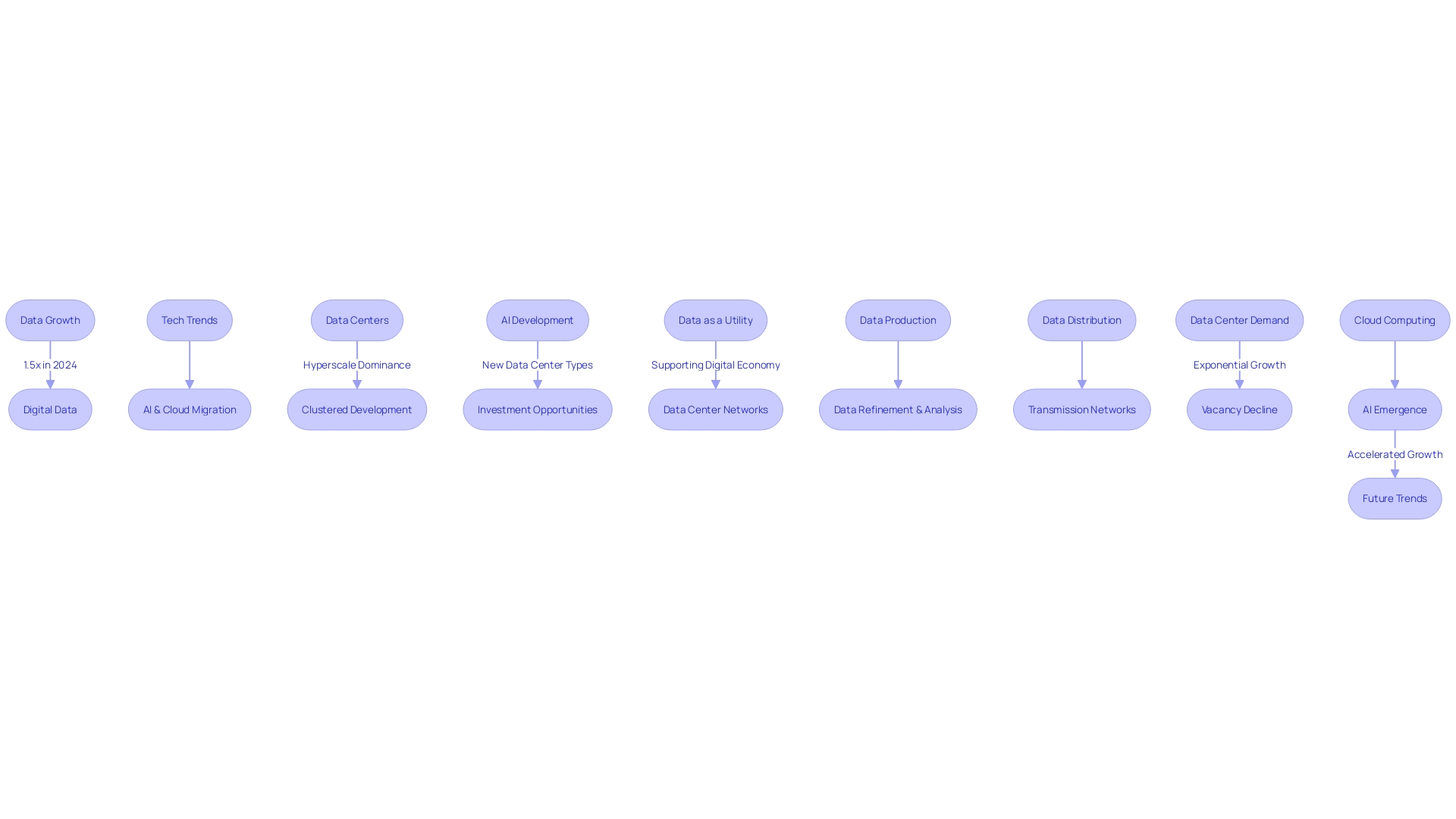
Security in IT Infrastructure
As organizations embrace the digital transformation, securing IT infrastructure has become a critical task in mitigating the ever-evolving cybersecurity threats. Effective security measures integrate network security, stringent access controls, encryption methodologies, vigilant vulnerability management, and comprehensive employee training. These components collectively form a resilient defense against potential breaches and unauthorized access.
Case studies, such as IHG Hotels & Resorts' transition to a managed software-defined wide area network (SD-WAN) solution, demonstrate the real-world application of these security measures. This solution not only provides enhanced performance and connectivity for vital systems like check-ins and key cards but also a heightened security posture against cyber threats. IHG's initiative has resulted in cost savings, primarily through the consolidation of networking and security functions and improved network management efficiencies.
Recent cybersecurity incidents highlight the importance of robust security practices. For example, Cloudflare's quick identification and response to a threat actor on their self-hosted server underscores the effectiveness of access controls, firewall rules, and Zero Trust tools in limiting the threat actor's movements and protecting customer data and systems.
Statistics from the first half of 2023 show that out of ninety-five billion events analyzed from integrated security tools, 0.1% were marked as 'alarms' for potential malicious activity. This finding emphasizes the need for vigilant security measures and the efficiency of AI-based detection systems in identifying high-risk threats.
Incorporating the principles of 'secure-by-design' in product development is paramount, as recommended by the latest industry white papers. This approach ensures that security is an integral part of the product lifecycle, offering inherent protection against cyber actors and aligning with the evolving cybersecurity landscape.
The lessons drawn from these case studies, news reports, expert insights, and statistical data converge on a singular truth: A proactive, integrated, and informed approach to IT infrastructure security is indispensable for protecting an organization's digital assets.
Optimizing IT Infrastructure for Streamlined Operations
Optimizing an IT infrastructure is essential for ensuring that the technological backbone of a business is both efficient and in tune with the organization's objectives. This process goes beyond mere fine-tuning; it encompasses the integration of automation and orchestration, the judicious use of resources, and the employment of advanced analytics and monitoring tools. Such optimization not only enhances operational fluidity but also contributes to cost reduction and an uptick in overall productivity.
For instance, the Guthrie Clinic's dedication to community health is mirrored in their IT approach, where a holistic strategy supports their healthcare and outreach programs. Their system is designed to address the multifaceted aspects of patient care, indicating a seamless alignment with business goals.
Similarly, IFCO's partnership with Rackspace exemplifies the benefits of leveraging external expertise to optimize IT operations. By collaborating with a seasoned partner, IFCO was able to refine its cloud strategy, demonstrating how third-party insights can fortify an organization's IT framework. Rackspace's focus on customer-centric solutions further underscores the importance of aligning IT infrastructure optimization with business objectives.
Moreover, Delivery Hero tackled the issue of account lockouts by streamlining the recovery process, thus eliminating unnecessary downtime and promoting productivity. This proactive initiative highlights the significance of continuous improvement in IT operations to maintain an agile and responsive infrastructure.
Telefónica Tech's deployment of a Virtual Data Center in Barcelona is another example of tailoring IT infrastructure to meet specific business needs. This strategic move brings cloud capabilities closer to customers, reducing latency and enhancing performance—key factors in optimizing IT infrastructure for better business outcomes.
In summary, the continuous optimization of IT infrastructure is not just about technology upgrades; it's about ensuring that every technological advancement or process improvement directly contributes to the strategic goals of the business, thereby fostering innovation, reducing expenditures, and enhancing productivity.

Conclusion
IT infrastructure is the backbone of organizations, enabling efficient operations and driving digital transformation. By understanding its components, such as hardware, software, and networking elements, organizations can optimize their capabilities for agility and gain a competitive edge.
Hardware components, including servers, computers, data centers, and network devices, form the physical framework of IT infrastructure. Software components, such as applications and operating systems, enable efficient task management and automation. Networking components facilitate communication and data exchange.
Facilities and data centers house essential resources.
IT infrastructure plays a crucial role in supporting service delivery, business processes, and digital transformation. It enables strategic outcomes like digital transformation, enhanced customer experiences, and operational efficiency. Proactive management and security measures are vital for operational excellence and protecting digital assets.
Optimization through automation and advanced analytics leads to streamlined operations and increased productivity.
As the IT landscape evolves, organizations must adapt to emerging technologies and changing business requirements. Cloud computing, AI advancements, and sustainability considerations shape future trends. Aligning IT investments with business objectives and staying informed on industry developments are key.
In conclusion, a well-managed and strategically aligned IT infrastructure is essential for organizations to thrive. By optimizing its capabilities, organizations can enhance agility, gain a competitive edge, and ensure long-term success.




